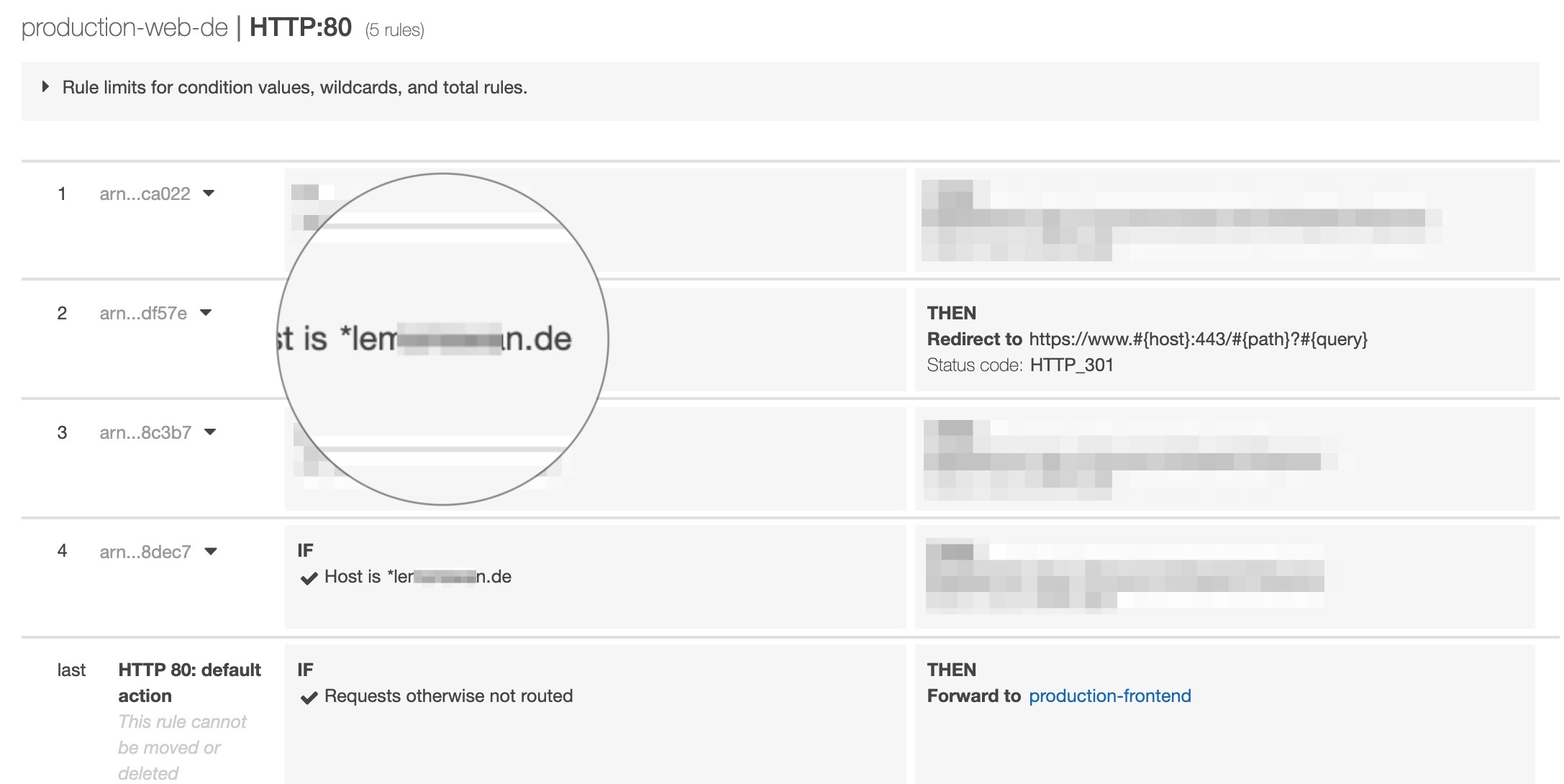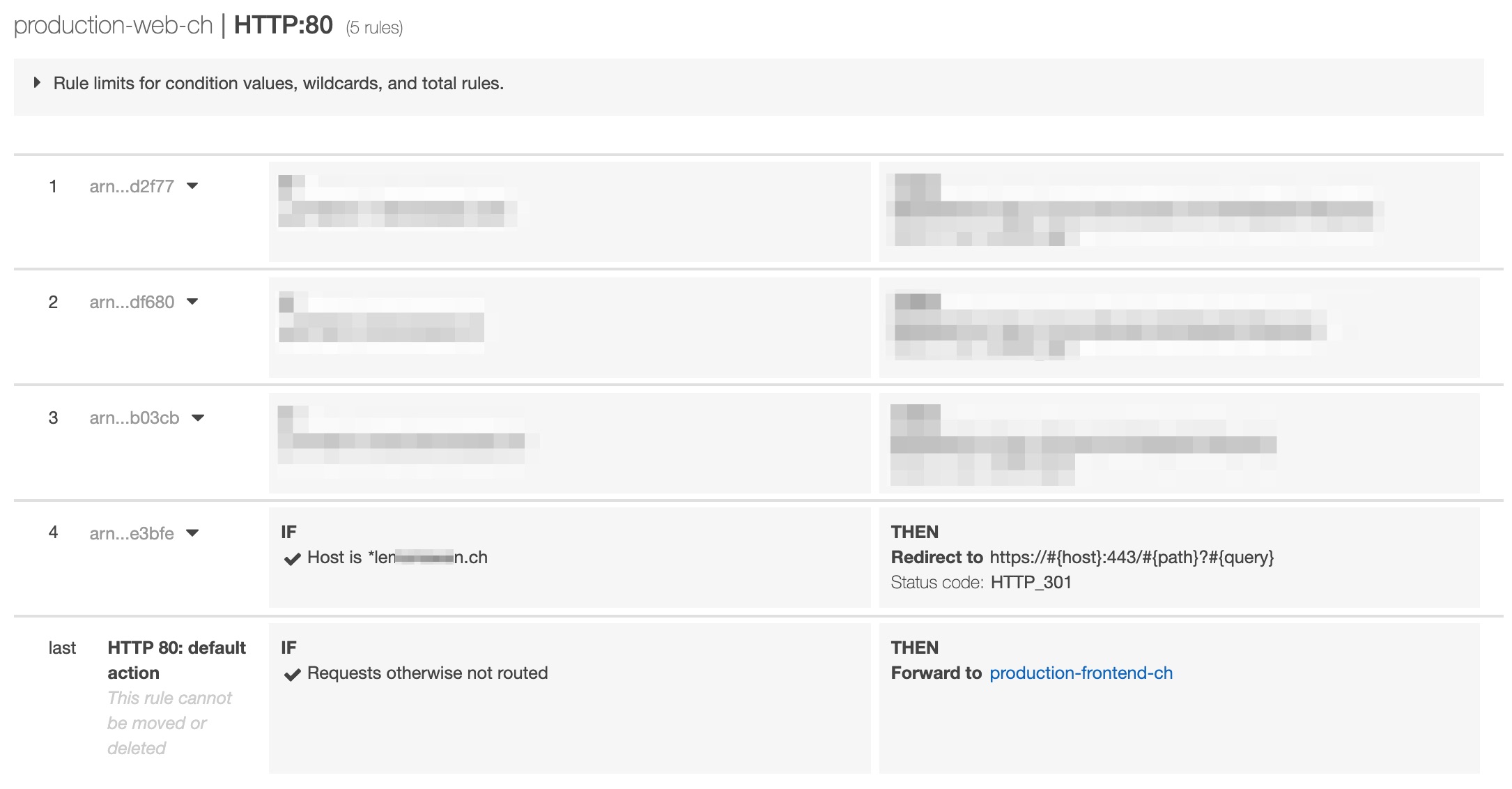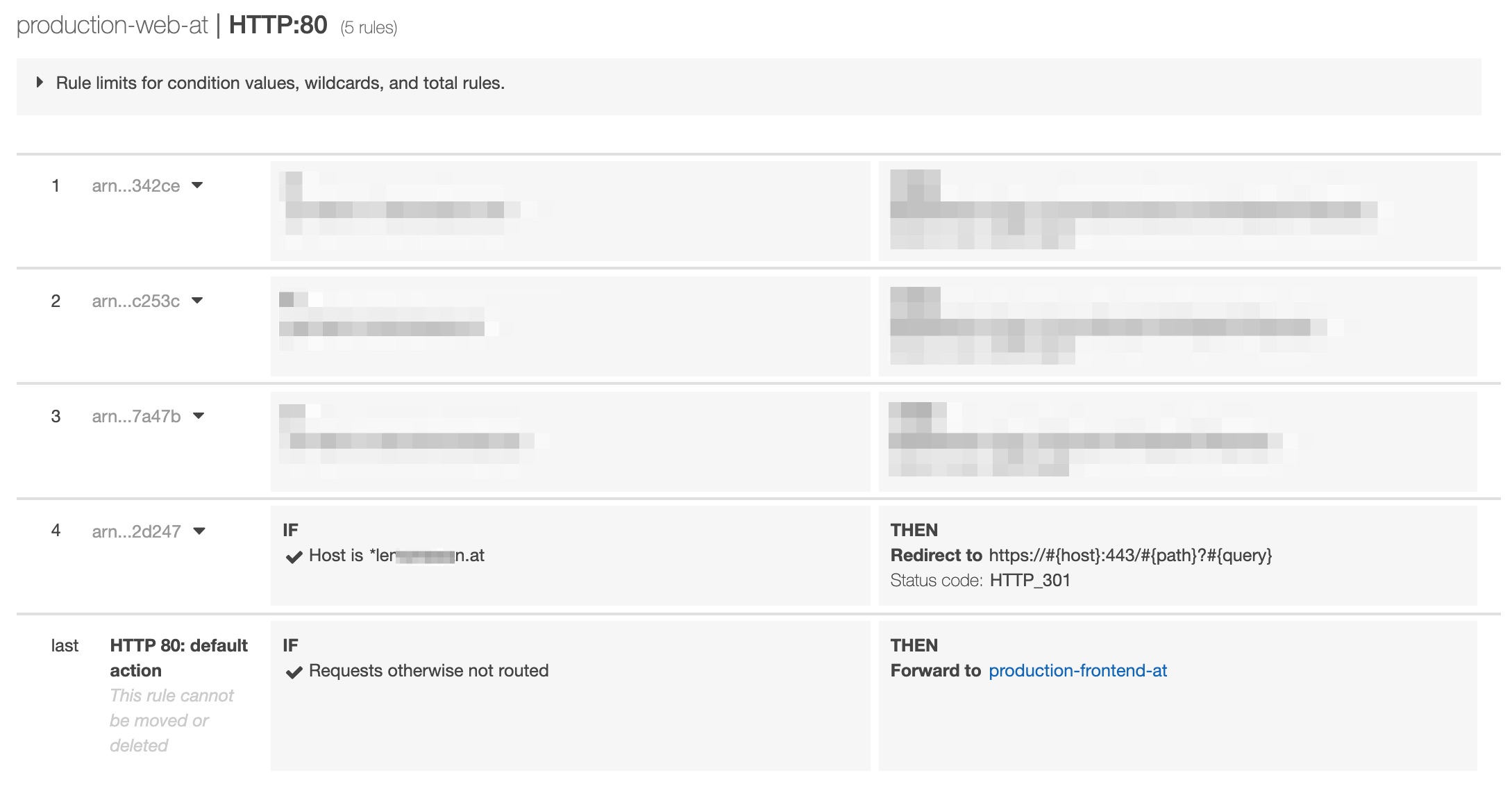Wildcardfuck



Root cause
- There is no fucking rootcause in these cases.
- It’s lack of knowledge of the guy who did these configurations.
- You’re assuming that you do it right and you know it clearly, but you never check or learn and understand it in the right way.
Knowledge base
-
Character * is Asterisk. A wildcard DNS record is a record in a DNS zone that will match requests for non-existent domain names. A wildcard DNS record is specified by using a * as the leftmost label (part) of a domain name, e.g.
*.example.com. -
Wildcards in the DNS are much more limited than other wildcard characters used in other computer systems. Asterisks at other places in the domain will not work as a wildcard, so neither
*abc.example.comnorabc.*.example.comwork as wildcard DNS records -
Using an Asterisk (*) in AWS Route53 Hosted Zones and Records
You can create hosted zones and records that include * in the name.
1. Hosted Zones
- You can’t include an * in the leftmost label in a domain name. For example,
*.example.comis not allowed. - If you include * in other positions, DNS treats it as an * character (
ASCII 42), not as a wildcard.
2. Records
DNS treats the * character either as a wildcard or as the * character (
ASCII 42), depending on where it appears in the name. Note the following restrictions on using * as a wildcard in the name of a record:- The * must replace the leftmost label in a domain name, for example,
*.example.comor*.acme.example.com. If you include * in any other position, such asprod.*.example.com, DNS treats it as an * character (ASCII 42), not as a wildcard. - The * must replace the entire label. For example, you can’t specify
*prod.example.comorprod*.example.com. - Specific domain names take precedence. For example, if you create records for
*.example.comandacme.example.com, Route 53 always responds to DNS queries foracme.example.comwith the values in theacme.example.comrecord. - The * applies to DNS queries for the subdomain level that includes the asterisk, and all the subdomains of that subdomain. For example, if you create a record named
*.example.com, Route 53 uses the values in that record to respond to DNS queries forzenith.example.com,acme.zenith.example.com, andpinnacle.acme.zenith.example.com(if there are no records that have those names).
- You can’t include an * in the leftmost label in a domain name. For example,